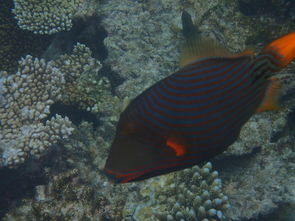Content:
Introduction: A well-maintained fish pond can be a source of joy and relaxation, as well as a productive fishing spot. However, achieving the perfect fish pond and mastering the art of fishing can be a challenging task. In this article, we will discuss how to dig a fish pond effectively and provide some valuable fishing techniques to help you catch more fish.

Planning and Designing Your Fish Pond Before starting the digging process, it is crucial to plan and design your fish pond carefully. Consider the following factors:
a. Location: Choose a location that is easily accessible and has a reliable water source. Avoid low-lying areas prone to flooding.
b. Size: Determine the size of your pond based on the available space and your desired fish population. A general guideline is to have one square foot of pond surface area for every pound of fish you plan to keep.
c. Shape: A natural, irregular shape is often more appealing and functional than a perfect circle or square. This design allows for a more diverse ecosystem and provides fish with various hiding spots.
d. Depth: The depth of your pond should vary, with a shallow end (12-18 inches) and a deeper end (3-6 feet). This allows fish to escape predators and regulate their body temperature.
Digging Your Fish Pond Now that you have a plan, it's time to start digging. Follow these steps:
a. Clear the Area: Remove any debris, rocks, and vegetation from the pond site.
b. Mark the Shape: Use a string and stakes to outline the desired shape of your pond.
c. Dig the Shallow End: Begin by digging the shallow end, ensuring it slopes gently from the edge to the deeper end.
d. Excavate the Deeper End: Continue digging to the desired depth, creating a natural-looking contour.
e. Create a Slop: Build a slope at the deeper end to allow fish to swim up to the surface for air.
f. Install a Pond Liner: Place a pond liner over the excavated area to prevent leaks and keep the soil in place.
g. Fill the Pond: Fill the pond with water, allowing it to settle and fill any gaps in the liner.
Maintaining Your Fish Pond To keep your fish pond healthy and productive, follow these maintenance tips:
a. Regularly Test Water Quality: Monitor the pH, ammonia, nitrite, and nitrate levels to ensure they are within the optimal range for your fish species.
b. Remove Algae: Prevent excessive algae growth by maintaining a proper balance of nutrients and oxygen in the water. Use an algae eater fish or a pond net to remove excess algae.
c. Clean the Pond: Remove debris, leaves, and dead plants from the pond regularly.
d. Stocking: Introduce fish to your pond gradually, ensuring the right balance of species and size.
Fishing Techniques Now that you have a well-maintained fish pond, it's time to master the art of fishing. Here are some valuable tips:
a. Choose the Right Equipment: Use appropriate fishing rods, reels, lines, and hooks based on the fish species you are targeting.
b. Understand Fish Behavior: Study the habits and preferences of the fish species in your pond to determine the best fishing techniques.
c. Bait Selection: Use natural bait, such as worms, insects, or fish eggs, or artificial lures that mimic the fish's prey.
d. Timing: Fish are more active during certain times of the day, such as early morning or evening. Adapt your fishing schedule accordingly.
e. Patience: Fishing requires patience and perseverance. Spend time observing the fish and adjusting your techniques as needed.
Conclusion: Creating a perfect fish pond and mastering the art of fishing can be a rewarding experience. By following these guidelines, you can build a thriving ecosystem and enjoy hours of fishing fun. Happy fishing!












